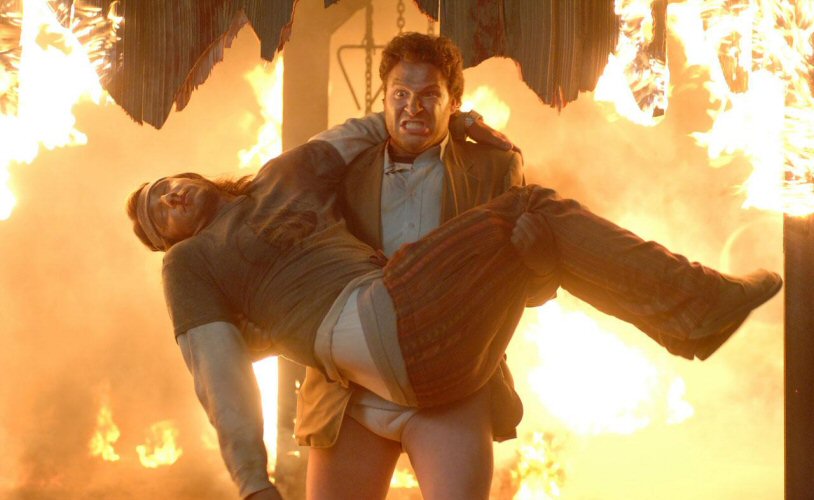Sisterhoods and Bromances: Where Are the Love Stories?
Posted on August 19, 2008 at 10:00 am
We have a lot of tender love stories in movies this year but they have mostly been about friendships. I can’t remember a time when there have been so few movies about falling in romantic love. What used to be the most reliable genre for movie success, the traditional “boy meets girl, boy loses girl, boy gets girl” (and variations thereon) has all but disappeared from the screen this year. 
If you look at the top 20 box offices successes of the year so far and the current releases, you see movies about girlfriends (“Sex and the City,” “Sisterhood of the Traveling Pants”) and “bromances” (“Step Brothers,” “Pineapple Express”). We have some superheroes who long for romance but neither Batman, the Hulk, Hancock, nor Iron Man can be said to “get the girl.” The closest we have to a superhero love story is “Hellboy 2.” There is some incidental romance in the new “Indiana Jones” and “Mummy 3” but it is almost an afterthought at the edges of the action, just as in “Get Smart” and “Don’t Mess with the Zohan” it is at the edges of the comedy. But we’ve seen nothing along the lines of last year’s romance-centered movies like “Enchanted,” “Dan in Real Life,” or “Juno” and stories of falling in love seem relegated to television on the Lifetime channel.
 We watch romantic movies for the same reason we watch action films — they are both about life’s great adventure, both ways for us to anticipate and relive our own choices and experiences.
We watch romantic movies for the same reason we watch action films — they are both about life’s great adventure, both ways for us to anticipate and relive our own choices and experiences.
More than halfway through 2008, the most romantic love story of the year so far at the movies has been this one:

